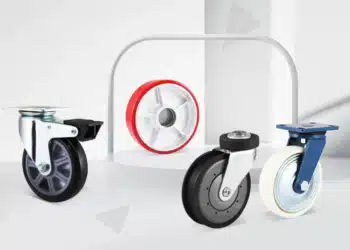Industrial spills are not just an inconvenience—they represent a significant threat to the environment, workplace safety, and a company’s bottom line. The key to effective spill management is not merely responding to these events but proactively preparing for them. By integrating robust spill containment and cleanup solutions such literally as oil bunds and absorbent technologies into your operations, you can navigate the potential hazards with confidence and efficiency.
Understanding the Importance of Spill Prevention
Contamination of soil and water sources, fire hazards, and workplace accidents are just a few of the potential ramifications of an uncontained spill. Hence, the essence of industrial spill prevention can’t be overemphasised. The regulatory landscape in Australia, governed by stringent environmental protection laws, necessitates that industries adopt proactive measures to prevent and mitigate the effects of such spills.
Ensuring that your facility has the right infrastructure to handle spills is pivotal. This includes having secondary containment systems like oil bunds, which are designed to catch and contain leaks or spills from storage containers, thereby preventing hazardous substances from seeping into the environment.
Oil Bunds: Your First Line of Defence
An oil bund acts as a barrier surrounding tanks or storage vessels, capturing any escaping liquid and affording you crucial time to address the spill before it spreads. The design and capacity of your oil bund need to be carefully considered in relation to the volume of liquid stored and the potential for rainfall accumulation, ensuring compliance with local regulatory requirements.
Durable and robust construction is vital for effective oil bunding. Materials such as concrete, steel, or specialised polymers must be impervious to the stored liquids and resistant to corrosion. By implementing oil bunding systems, industries can significantly minimise environmental risks and safeguard their operations against costly clean-up operations.
Spill Cleanup: Absorbent Technologies at Work
While prevention is a critical component of spill management, having the right tools for spill response is equally important. Industrial absorbents play a crucial role in spill cleanup, enabling quick response and efficient remediation. Among these solutions are oil pads and soaker pads, which are designed to rapidly soak up oils and fuels while repelling water, making them ideal for both land-based and marine spill scenarios.
The Efficacy of Oil Pads
When dealing with oil spills, oil pads are the go-to solution for immediate intervention. These pads are not just highly absorbent; they are also easy to deploy and can be strategically placed near potential spill sites for rapid response. Oil pads are particularly effective for absorbing spilled oil from floors, water surfaces, and even for wiping down contaminated equipment.
Utilising oil pads as part of your spill response strategy can significantly reduce the spread of contaminants, protect workers from hazardous chemicals, and help achieve compliance with environmental regulations. Moreover, their use simplifies the cleanup process, saving valuable time and resources.
Soaker Pads: Versatility in Spill Response
For more extensive spills or in areas where the liquid might be flowing, soaker pads are an invaluable asset. These high-capacity absorbent pads offer rapid wicking and can absorb considerable amounts of oil or fuel quickly. By placing soaker pads along the spill’s pathway, you can effectively stem the flow and avoid further environmental damage or safety hazards.
Choosing the right soaker pads involves assessing the type of liquids your facility typically handles and the expected volume of potential spills. With the various thicknesses and absorption capacities available, you can tailor your spill response kit to meet the specific needs of your business.
Best Practices for Spill Response
Incorporating oil bunds and absorbence techs, like oil and soaker pads, into your spill contingency plans is critical, but it’s also essential to follow best practices for spill response. This includes regular training for your staff on how to use these products effectively, as well as routine inspections and maintenance of all spill prevention and cleanup equipment.
Effective spill management also involves clear communication protocols and a well-documented spill response plan. In the event of a spill, employees should know exactly who to notify, the steps to contain and clean the spill, and how to properly dispose of used absorbent materials. A coordinated and informed approach is essential for minimising the impact of spills on the environment and operational continuity.
Ultimately, the aim is to contain, control, and clean up spills with minimal disruption and risk. By integrating comprehensive spill containment systems, such as oil bunds, alongside absorbent products like oil pads and soaker pads, businesses can protect both their interests and the environment. Staying ahead of spill risks through preparedness is not just responsible; it’s also the hallmark of a forward-thinking and sustainable business.
Conclusion
In conclusion, industrial spills are not solely a potential threat—they are an operational reality. By proactively equipping your facilities with protective infrastructure such as oil bunds and investing in efficient spill cleanup technologies like oil pads and soaker pads, you fortify your operations against unexpected incidents. Engaging with these essential practices not only affirms a commitment to regulatory compliance but also demonstrates a conscientious approach to environmental stewardship and workplace safety.
Spill preparedness is not a luxury—it is an imperative. Employing the proper infrastructures and technologies to prevent and manage spills is an investment in the sustainability and resilience of any industrial operation. By navigating spill hazards with comprehensive solutions for containment and cleanup, businesses can secure a safer and more efficient workplace environment for all.








